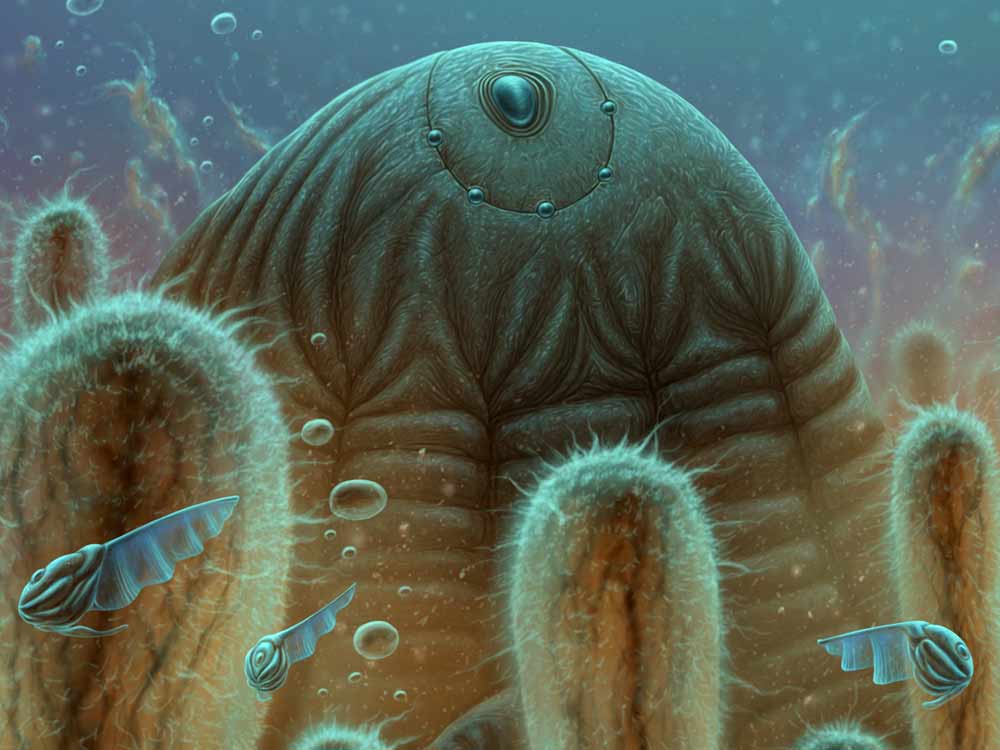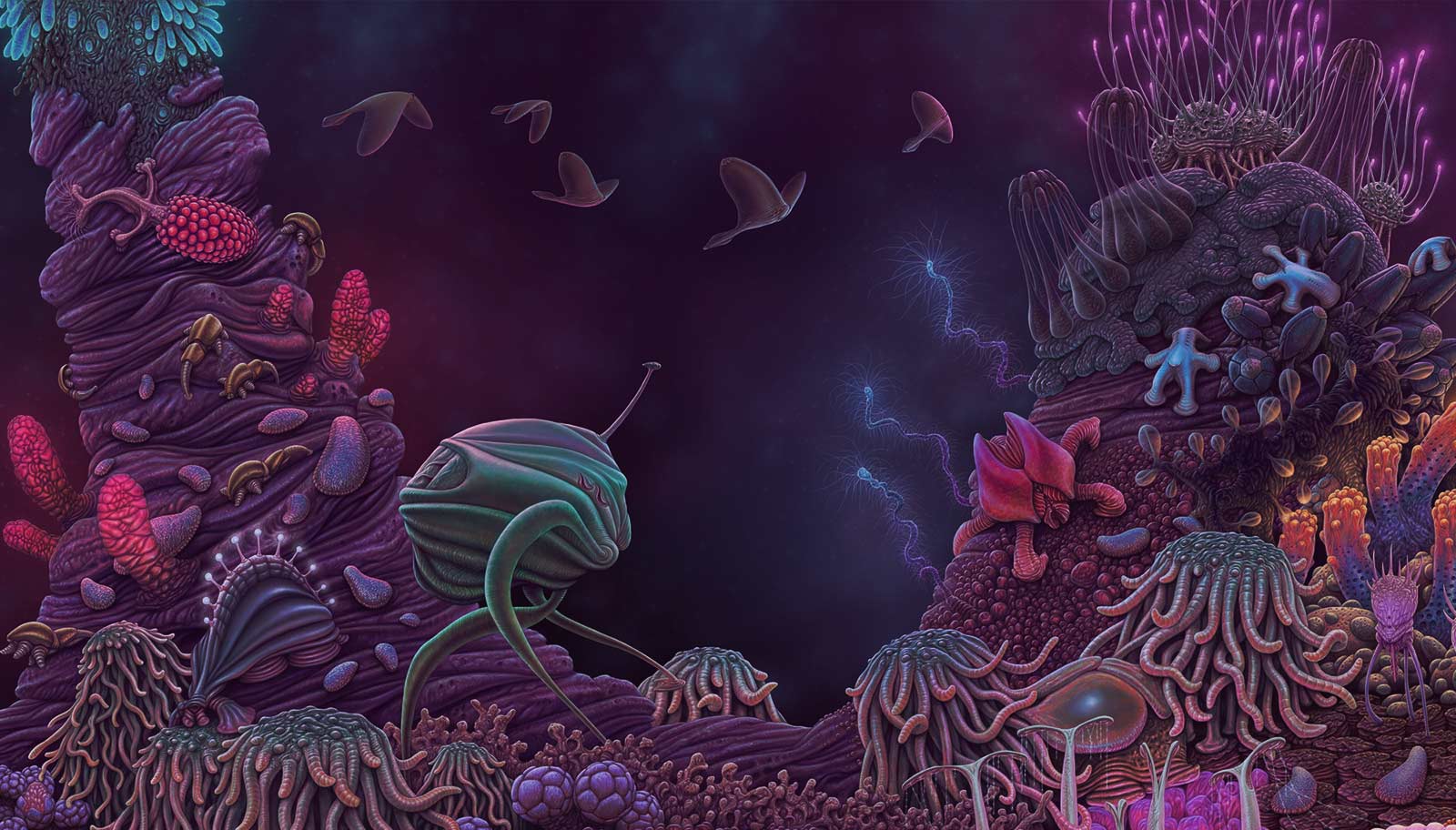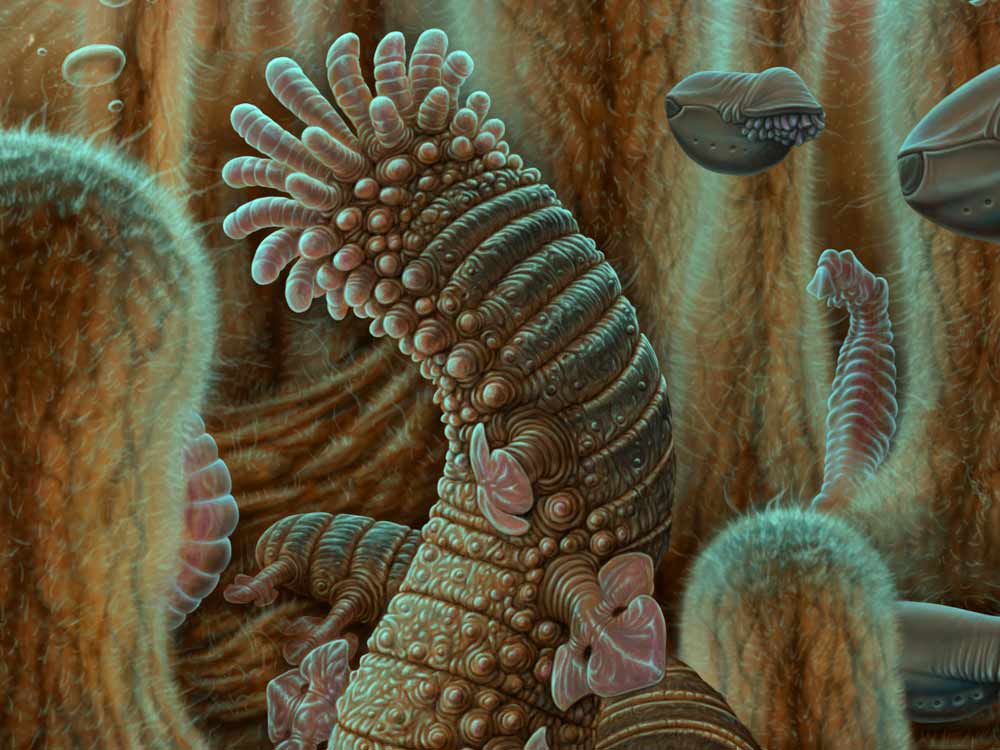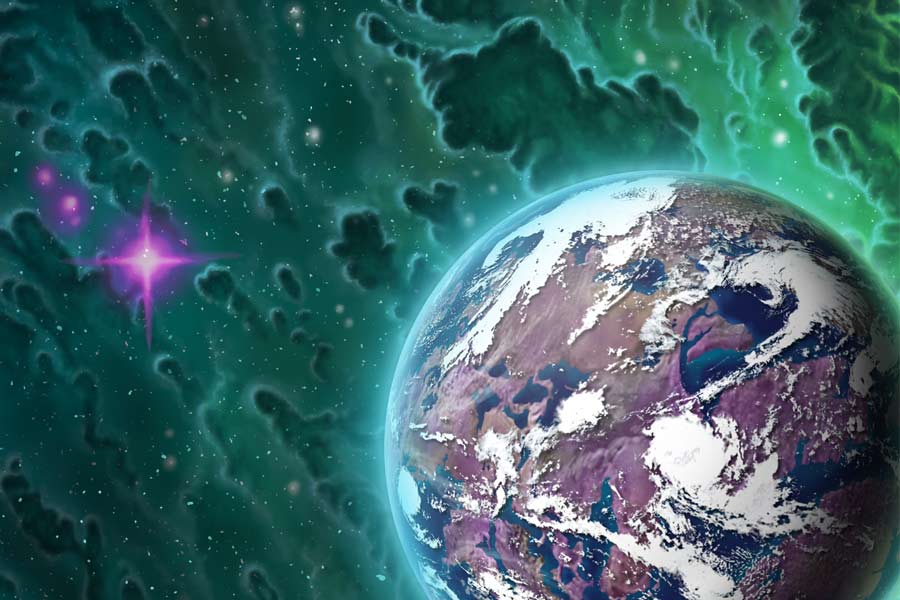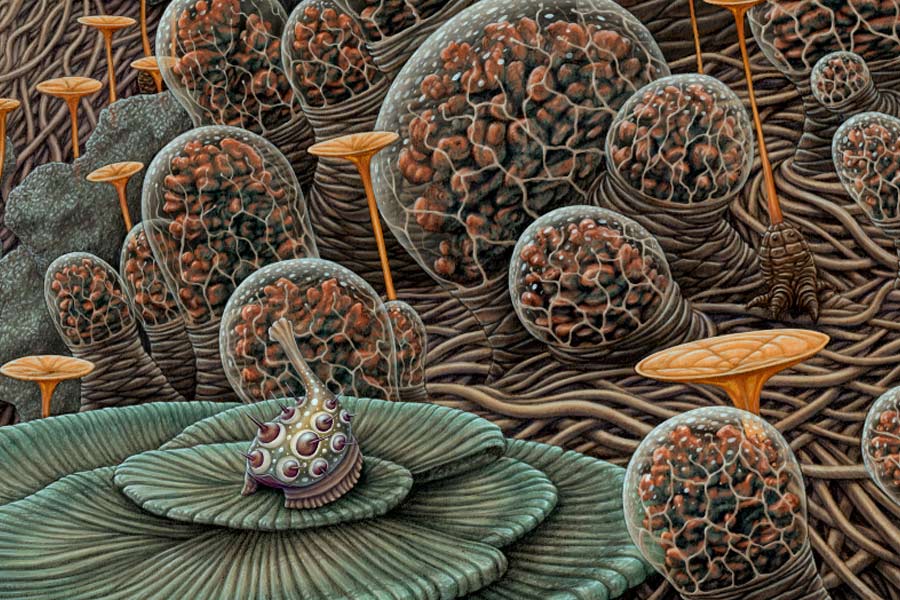The Glow Forest
Lights in the darkness.
An explosion of bioluminescence.
Almost no sunlight can pass below the canopy of the glow forest. It is a community nearly sealed off from the rest of the planet. As a result, organisms in this ancient biome have evolved a massive array of survival strategies using bioluminescence. This is a very humid environment as well, as evaporation is thwarted by the thick ceiling of biomass. The conditions here are very similar to a cave, but being built of organic flesh fueled by sunlight above, it can support far more life.
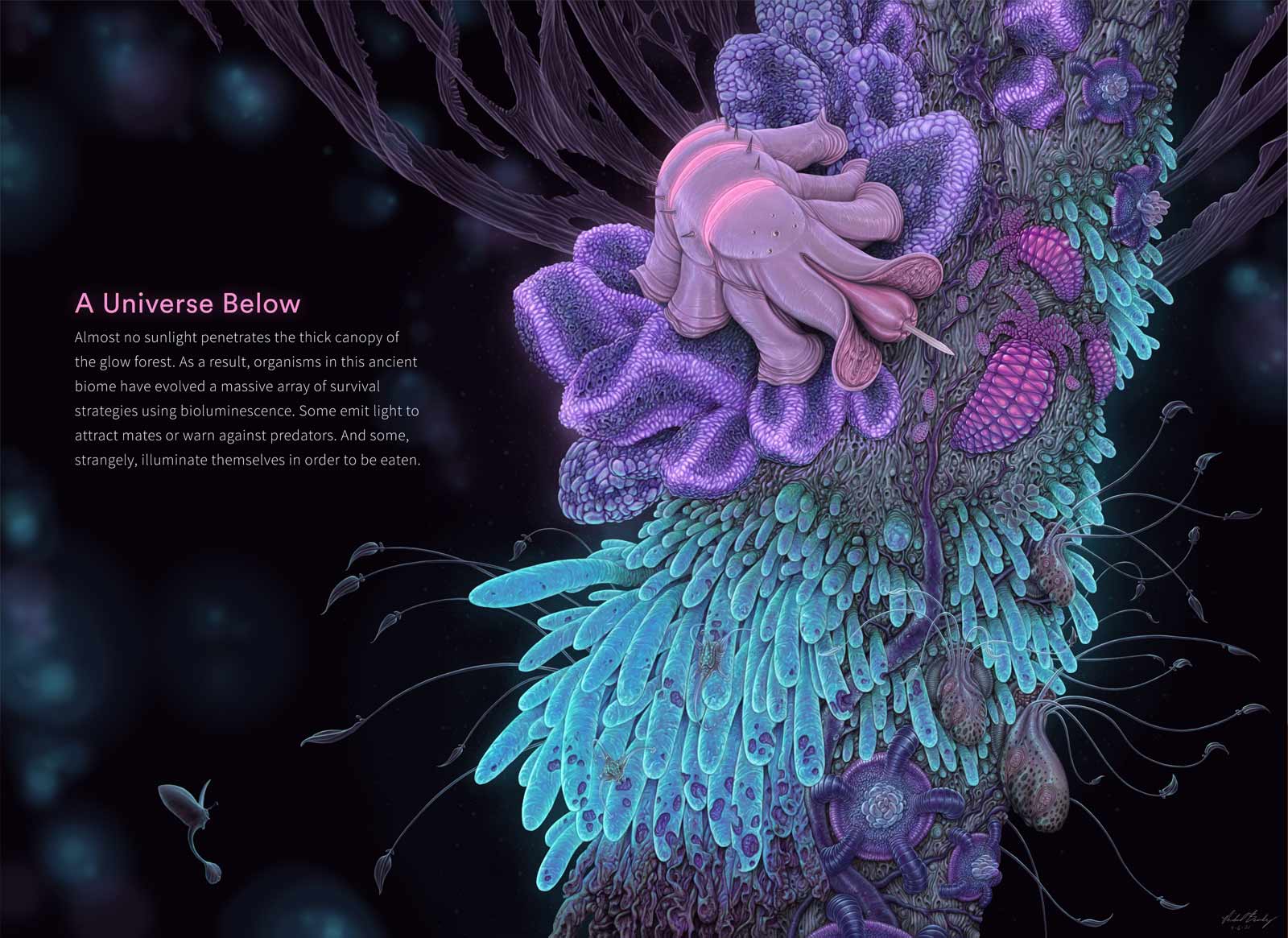
A Universe Below
2021, digital
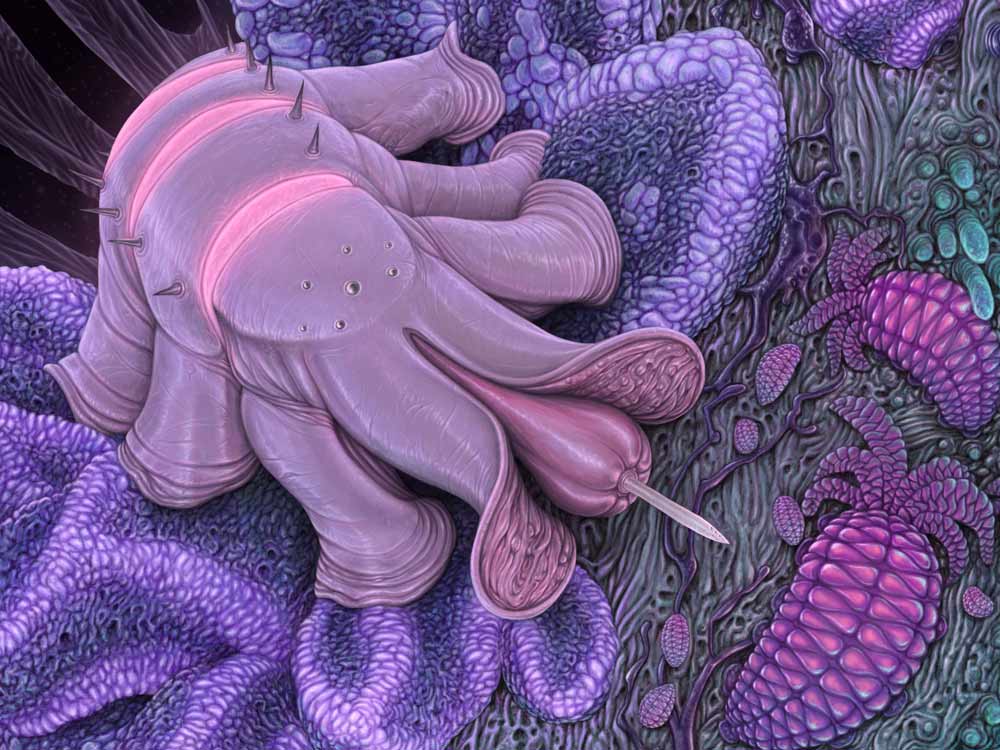
Luminescent aposematism
Repeating bands of pink biolights mark the presence of a Striped Gladioris. Should this luminous warning go unheeded, a would-be predator is then met with a set of sharp dorsal spines. And as a last line of defense against a very determined or foolhardy opponent, the gladioris can turn its deadly proboscis into a formidable deterrent. Usually employed to spear prey, this sharp weapon shoots out from the front lobe of the gladioris at speeds high enough to puncture hard defensive armor. Its waxy skin is a defensive feature too, for water collecting against permeable membranes for too long invites infection from microorganisms.
Peraventers slowly flail their sticky tentacles around in the damp air with the rather banal goal of grabbing something to stuff into their mouths. It's a simple way of life, but not always very lucrative. Luckily for them, setting up shop next to a patch of bright blue glowing nodules drastically improves the chances of encountering edible visitors. These glowing nodules are the reproductive bodies of the Azure Plicaderma, which surrounds and parasitizes the main pillars of this forest. They glow to attract predators, and after being consumed they develop within the bodies of their new host and use various strategies to perform a timely exit to continue their life-cycle.
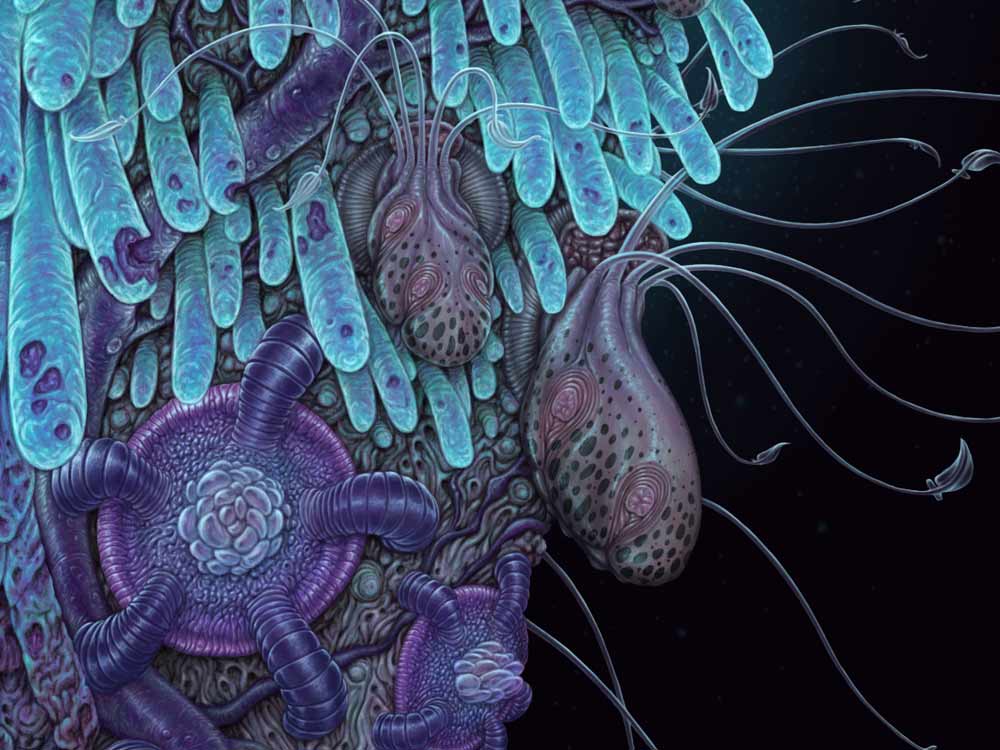
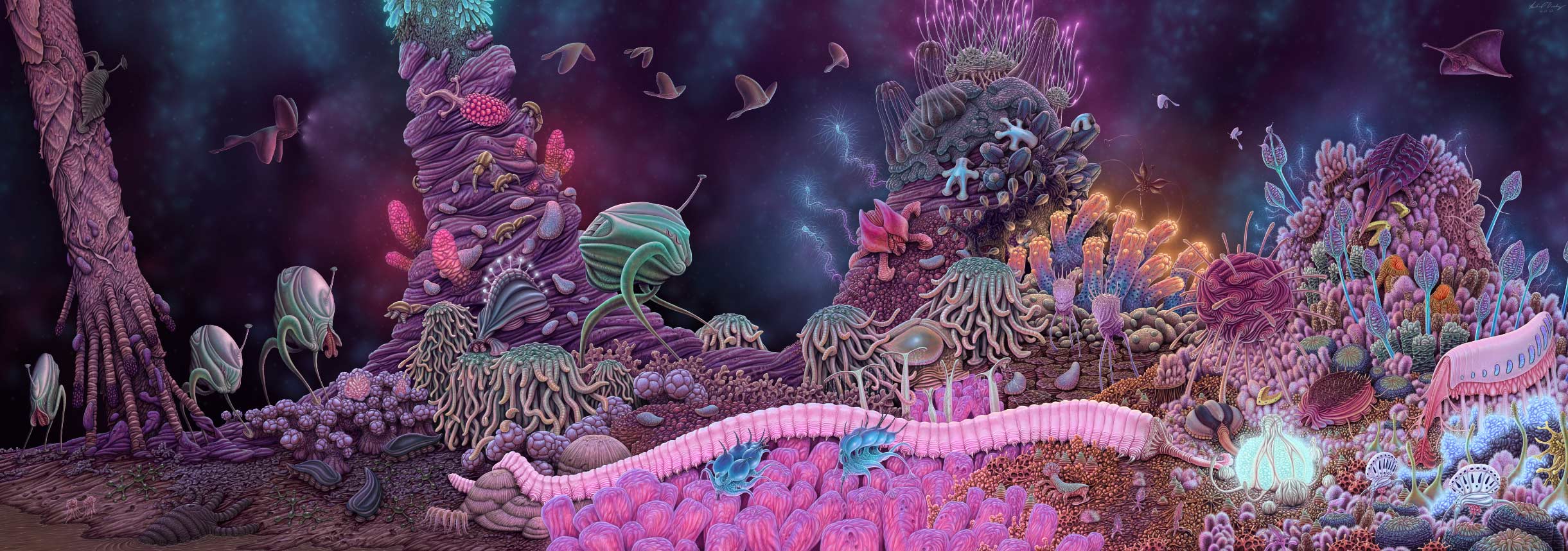
Scroll right to view entire image
The Garden of Unearthly Delights:
Biodiversity in Glow Forest Communities
2022, digital
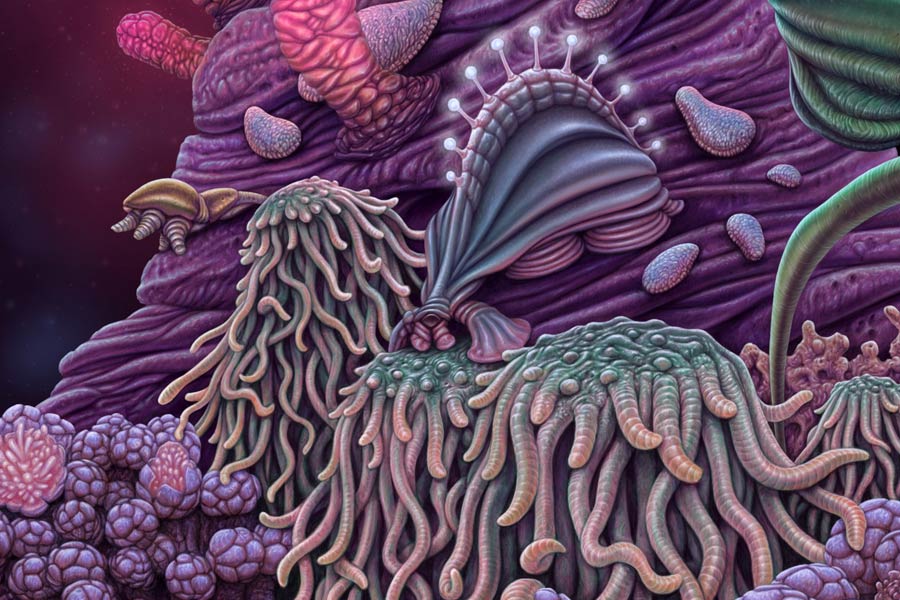
A biological arms race
Down on the floor of the Glow Forest, a startling array of lifeforms has evolved in the cool dark mist. The creatures that comprise the main structure of this biome are known as Vela, and they stretch skyward, consuming all the available sunlight and allowing none to escape below. This species won an evolutionary arms race long ago, and as a result its photosynthetic competitors were pushed to extinction. However being a successful monoculture has its disadvantages.

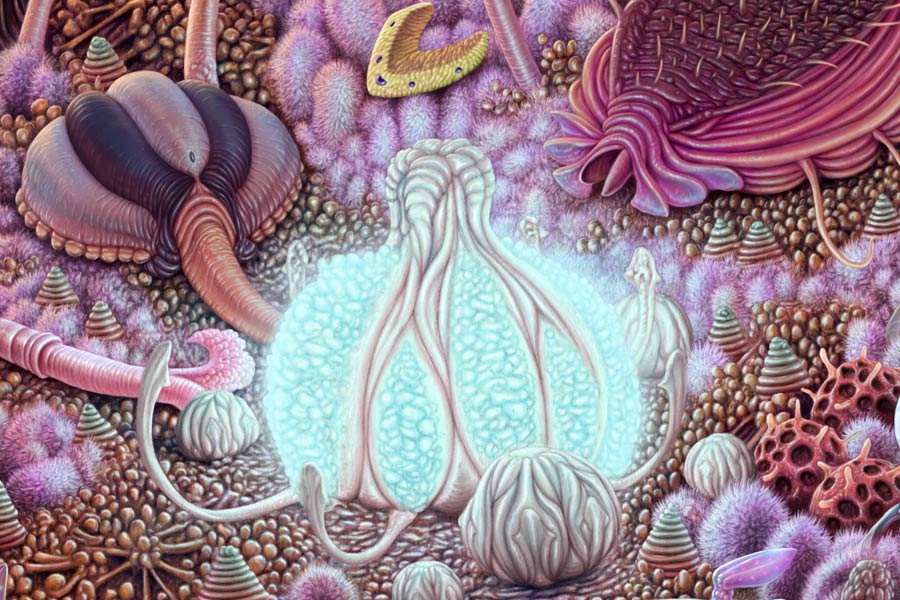
Autotrophs form the base of the food chain in most environments, and now the Vela is the only one. This means it is now the main food source for many other species who would otherwise have more choices. Its main nemesis is the Stragulum. This amorphous creeping wrinkled blanket infects a new Vela pseudopod nearly as soon as it touches the ground. The stragulum rapidly takes hold and covers every inch of the surface, slowly digesting it.
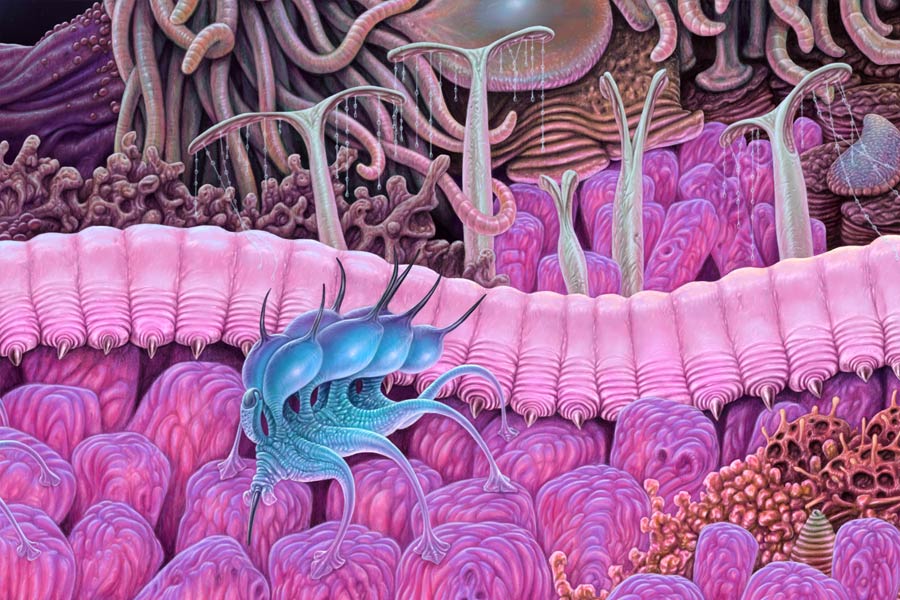
This in turn attracts a cadre of new organisms which consume the flesh of the Stragulum. Predators are then drawn to the area, and as the number of species grows, a self-perpetuating cycle of increasing biodiversity takes place. Eventually, the stragulum becomes too much of a burden to the Vela and it severs its pseudopod in order to rapidly grow another nearby. But the biomass of the parasite still lingers for quite some time, feeding a plethora of bizarre and unique organisms scrambling for their share of the resources in this oasis of light amidst the darkness.
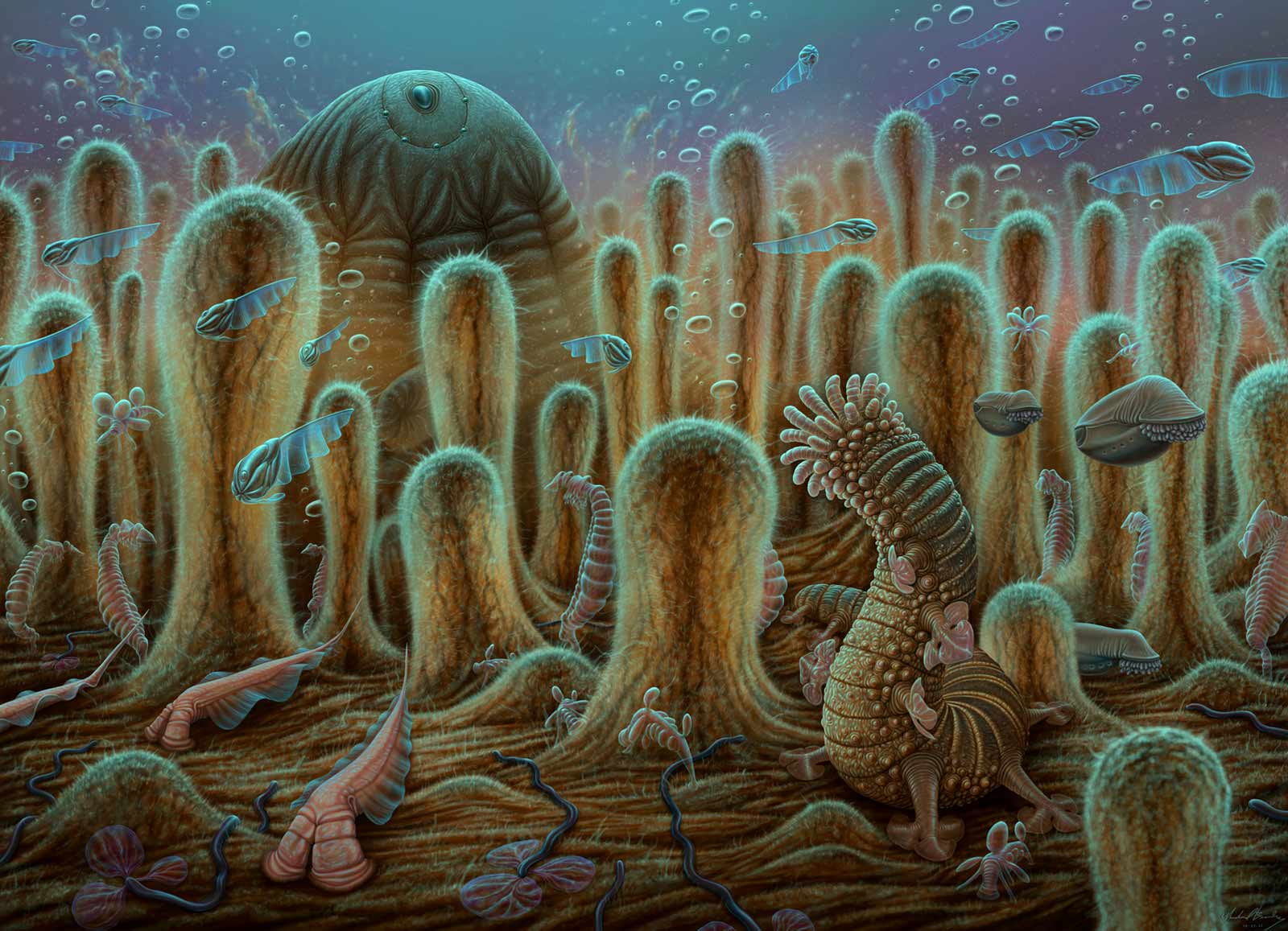
World-Eater
2021, digital
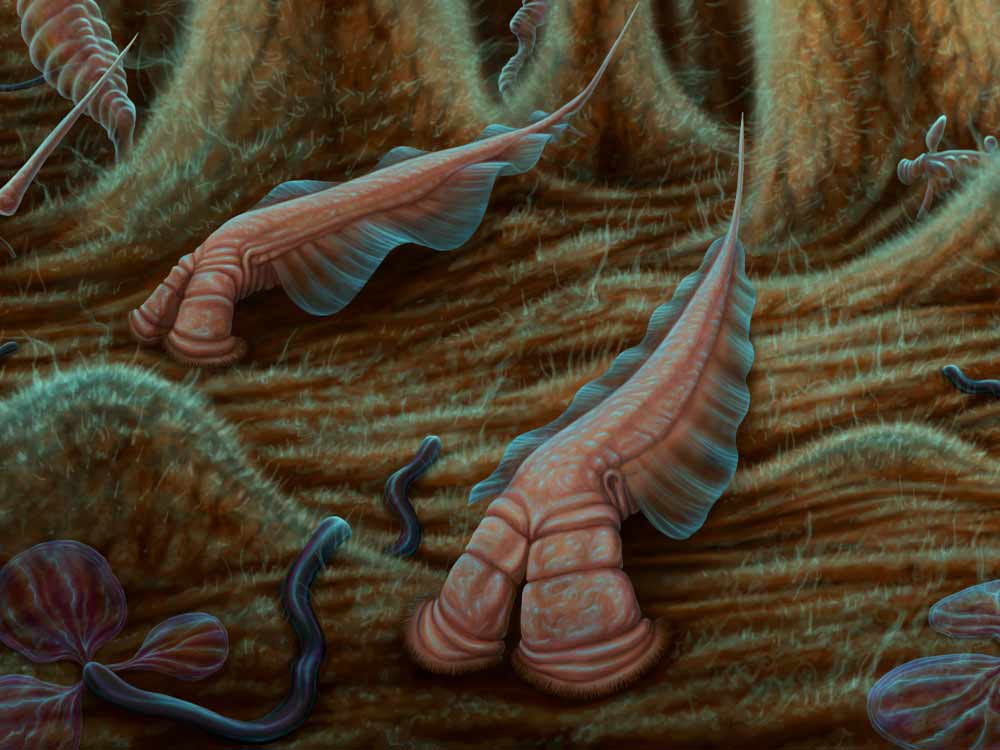
Forest Ponds
In the murky ponds on the floor of the Glow Forest lives a surprisingly diverse community adapted to the near total darkness. Decaying organic material releases methane gas which is harnessed by towers of colonial microorganisms. Upon this bedrock of the food chain, a plethora of creatures creep and crawl about their daily lives while trying to avoid the pond’s top predator - a massive leviathan blindly devouring everything in its path.
